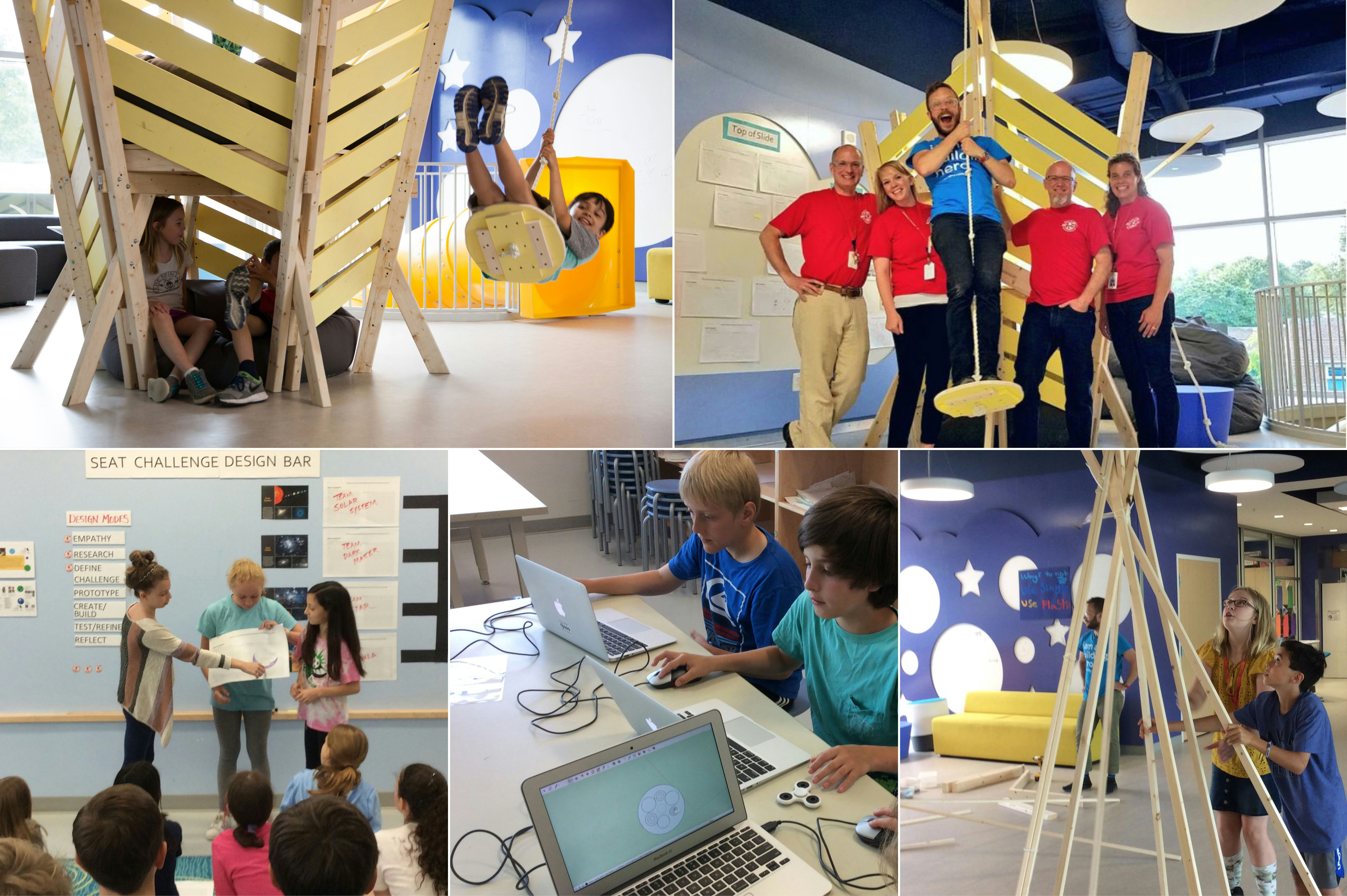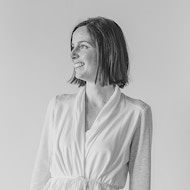“Play is children’s most serious work. In a playful environment, you feel safe enough to explore ideas that would otherwise be risky. The mind, the eye, and the hand can actually achieve their magic if you let them.” - Edith Ackermann, Developmental Psychologist and Learning Researcher, MIT Media Lab (1946-2016)
Play Is Children’s Most Serious Work
As the late developmental psychologist and learning researcher Edith Ackermann articulated in a 2014 interview with the Exploratorium’s Tinkering Studio, “playfulness is a counterpoint to curiosity.” You need both ingredients to inspire risk-taking and to see things differently—activities which give rise to innovation. Elementary school-aged children are at one of the most curious, kinetic, and creative junctures of their lives. In the right setting, not only are they open to trying new things, they are also resilient in the face of frustration or failure—along the way, growing insight through learning by doing.
Making and tinkering within the right parameters, according to Ackermann, allow children to innovate and discover new things while feeling safe to take risks. For many students, tinkering fuels their natural curiosity and leads them understand not how only things work but also how things fit together in the larger picture—helping them with problem solving, relationship building, and fine motor skills. Ultimately for Ackermann, children can become experts in the process of learning and creation: “when it comes to learning and creative uses of technologies, children have more to teach adults than adults do children.”
Experts Working Alongside Experts
Through the support of Arlington Public Schools and the foresight of former VMDO Associate Dina Sorensen, Discovery Elementary School Art Teacher Maria Burke attended the 2015 Constructing Modern Knowledge institute, which featured a day trip to the MIT Media Lab with facilitated reflections and discussions led by Dr. Edith Ackermann. Inspired to translate thought into action, Burke collaborated with Sorensen to bring together Discovery teachers Heather Blake and Greg Rusk, among others; researchers and professors of architecture Dr. Rosie Parnell (Northumbria University) and Evelyn Tickle (James Madison University); building hero Alex Gilliam of Public Workshop; industrial designers from VS America; environmental graphic designers from Iconograph; and architectural designers from VMDO to devise a prototype maker curriculum for students at Discovery Elementary School called the Seat Design Challenge.
The Seat Design Challenge invited 83 fifth graders to re-imagine the design of furniture to create a novel space in their school. Featuring a host of experts working alongside students and teachers, the curriculum covered a 6-month period—from an initial discovery and research phase to a high-intensity 2-week prototyping workshop. During this 2-week stretch, students worked in teams to create and pitch conceptual ideas about seat design; experiment in translating prototypes into built form; and reflect about what they learned, culminating with a vote for the top seat design. The winning design was built at a large physical scale to enhance an existing learning space at the school.
According to Burke, “this collaboration capitalized on the design thinking process from a variety of professional perspectives, each of us empathizing with one another and synthesizing new vantage points, each peering into the project from a different face of the prism.”
Developing a Student-Led Framework for Making
Students became the creative experts in the process—individually and collaboratively engaging with experiential learning that was both self-directed and investigation-based. Burke reflects: “Students planned for their seat to have many uses. They thought about the quantity of people that would sit in their seat, as well as the materials, functionality, and form. From data students collected, they hoped for an elevated, comfortable, and nurturing space with a cocoon-like atmosphere that would be a place to escape from school stress, to read a book, or do work calmly on their iPad in the commons area at the top of the slide on the second floor of Discovery.”
Similar to how designers in various creative fields collaborate and iterate, students were invited to comment on each other’s work in order to refine concepts and enhance designs. According to Burke: “Brainstorm sketches were hung around the school ... in hopes other Discovery students (from any grade level) would layer yellow Post-it notes filled with suggestions and comments to propel their ideas beyond their preliminary work.” With the help of Jonathan Pidwell, Industrial Designer and former Head of Product Development at VS America, students were prompted to transform their 2D designs into 3D “functional sculptures” using low-tech maker materials such as hot glue, markers, and scissors. During this prototyping phase, VMDO designers helped students model their designs using Sketchup, a 3D rendering tool, and 3D print their designs for further reflection and iteration.
Pidwell reflected: “I often see intelligent well-trained individuals who are scared of not knowing … and while the unknown is always a risk, a well-developed process can make it more safe. If you never try something because of being unsure then you often never discover what wonderful innovative things are possible. Letting children discover, fail, and win, is everything for them. Showing them the process of evaluation and decision-making sets them up well for the future, both in their professional careers and their private lives.”
Building with Conviction
A “Cheerleader of possibility” and innovator of participatory design/build workshops, Public Workshop founder Alex Gilliam helped students build a large-scale creation of the winning prototype—a “rocketship seat” that would complement the school’s two-story slide. Burke reflected: “Gilliam taught the students and teachers not only to use power tools with safety, but to feel comfort in struggle, to trust themselves while measuring from the heart, and to solve their own problems.” Approaching their graduation to middle school, students “relished the pursuit of creating a new seat to leave behind at Discovery as a legacy for future students to enjoy.”
In an era where student success is often measured by high test scores, games won, and tasks completed, the Design Challenge offered students the chance to meet a communal need in an inspirational, real-world setting. According to Gilliam, “often in this work, the people who are least recognized or least thought of as having potential as leaders rise up. They’ve been leaders in hiding and they just needed the right conduit, the right chance to take [their inspiration] and run with it.”
Lessons for the Future
As STEM and technology fields continue to expand (and are increasingly combined with art and design), it becomes increasingly important that students learn to take creative ownership of their ideas and develop high-level problem-solving skills. The challenges of the future will require breaking out of the mold, or rather re-designing the mold, by tapping into one’s creative potential to affect change. Design-thinking offers one way to help students get comfortable with being uncomfortable through supported risk-taking.
Discovery’s 2017 Seat Challenge serves as a successful prototype for future design challenges and curriculum. Burke expects that in 2018, students will measure their designs against original goal-setting—ultimately evaluating the impact of the designs on the environment through place-based analysis and sustainable thinking. According to Burke, “the mission of Discovery Elementary School is to ‘learn, collaborate and innovate with the world in mind.’ With this mission, the Seat Design Challenge will teach our students to become sustainable innovators and pioneers for our future.”

